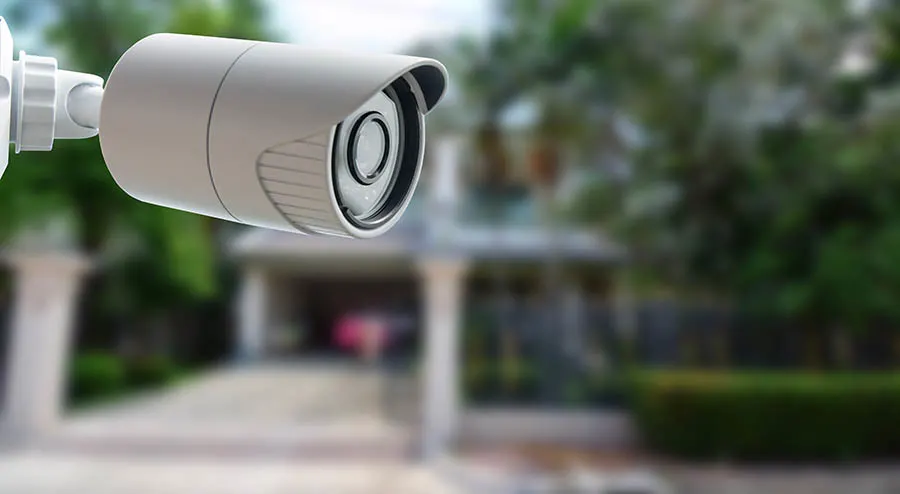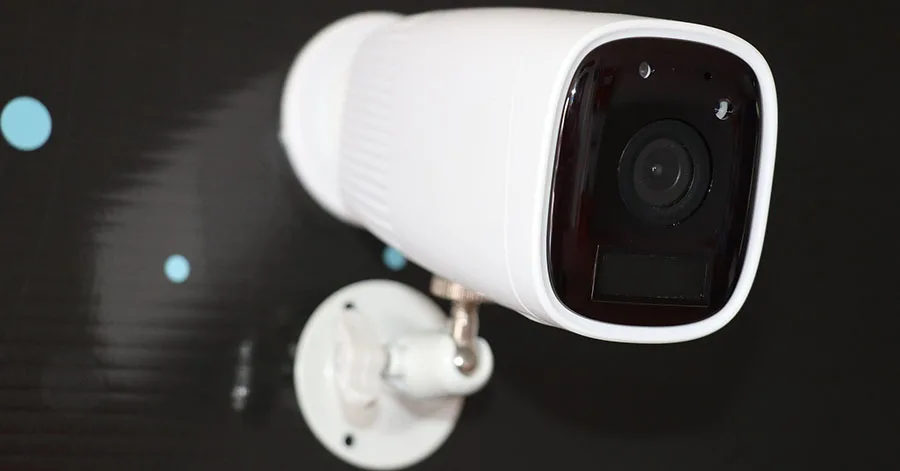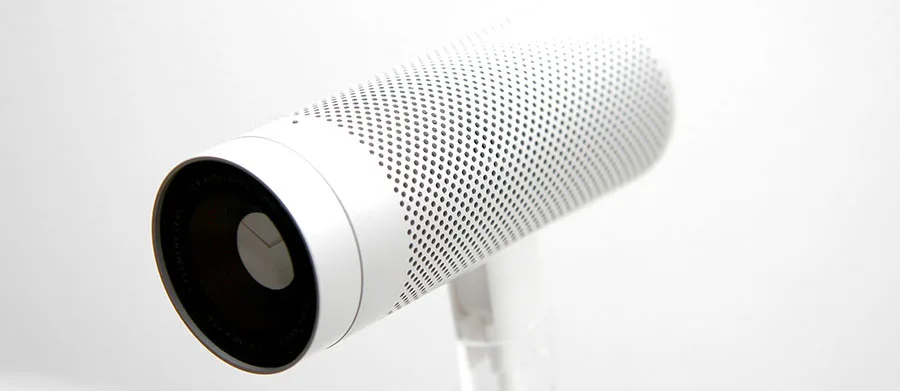When shopping for security cameras, you undoubtedly will come across different resolutions to choose from. Numbers like 1080p or 4k are advertised selling points for cameras and you need to understand them before making any purchases. 1080p and 4k resolution cameras are different in a number of ways that impact how you should use them in a security system.
1080p security cameras are great for indoor and up-close uses, like monitoring a room or entryway. 4k cameras offer more flexibility for monitoring larger spaces, with higher resolution that allows capture of details like faces or license plates.
Each camera resolution can bring certain benefits to your system. Before going out and buying the best cameras you can, it is an excellent strategy to access your security needs before making any purchases. Some resolutions are better suited for particular environments, while others would be overkill if utilized improperly.
Understanding the Terminology

The image resolution is simply the number of pixels that are packed into an image. A higher resolution will result in a crisper, smoother image, while a lower resolution will be more blocky and less clear. In very low-resolution images, you can even see the edges of the pixels, which is known as “pixilation.” You want to avoid extremely low resolutions because you can’t make out important details at all, which limits the use of the video.
You usually see resolution expressed in Width x Height or something like 1920 x 1080. This would mean that the image is 1920 pixels wide and 1080 pixels tall. When it comes to TVs and security cameras, you will see standard terms like 4K or 1080p used to describe resolution, aspect ratio, and a few other details. A term like “4k” is sort of resolution slang, it means an image of roughly four thousand pixels across.
Early CRT television sets started out with far fewer than four-thousand pixels across. For most early TVs and computer monitors, the only way to display an image was to use one of the display standards at the time. These were PAL and NTSC. These displays only supported lower resolutions like 320 x 200 pixels.
As screens evolved, so did their max resolution. By the early 2000s, the average display resolution for a monitor was 800 x 600; within the next 20 years, it doubled. Over the years, we as consumers have seen a lot of changes in resolutions. Most of these have been combined with HD TV standards that we are familiar with.
First came 480p in TVs, then we saw 720p, and today you can see standards like 4k or 8k that are considered cutting edge. Either way, there is a lot to know when it comes to displaying standards. But to help you understand better what these terms mean, let’s break down some of the standards you might see today. We’re talking a lot about screens now, but the terms actually refer to the video itself, so, a 4k or 8k camera is capturing images that will display on a capable screen.
- 1080p – This is also known as Full HD and sports an image resolution of 1920 x 1080. This standard usually supports an aspect ratio of 16:9. It is named for the 1080 pixels that run vertically on the screen. The p stands for progressive scan, which contrasts analog video interlaced scan.
This just means that instead of alternating which lines of pixels are displayed, it shows all lines at once. 1080p is sometimes referred to as 2k, but this is not accurate as 2k is its own display standard.
- 4K – 4k is a loose descriptor that has a couple of different variations. It is used not just for consumer TVs but also for cinema cameras and screens. For the standard 4k Ultra HD TV, you will see a resolution of 3840 x 2160 pixels. 4k is called so because of the almost 4,000 pixels displayed by the horizontal axis. 4k has become increasingly popular over the last few years due to the drop in price.
- 8K – Known as the successor to 4k, this resolution standard is known for the almost 8,000 pixels it can display across its horizontal axis. It can support a resolution of 7680 x 4320 pixels. 8k hasn’t made it to cinemas yet, but 8k resolution TVs are slowing starting to make their way into the market. With that said, it will be many years before they’re a common household item.
When shopping for cameras, you may also run into the term megapixel. This term is usually used for cameras and signifies the total amount of pixels that the camera can capture. A megapixel represents one million pixels. For example, a 2-megapixel camera would display roughly two million pixels with a resolution of 1920 x 1080.
When it comes to security cameras, you most often see 1080p or 4k Ultra HD. This is because these are also the most popular standards for TVs and computer monitors. Because security camera systems depend on these other technologies to display the camera’s images, they need to be compatible.
Why it Matters for Home Security?

Home security is all about protecting your home. It means that you are not only preventing crimes like robberies or property damage, but you are also prepared in case you are a victim of criminal activity. Having a robust security system can provide you with the monitoring tools that will help you bust a crook in the event of a crime.
This is where resolution comes in. If you have a camera set up, you need to make sure it can record a resolution that will help you identify key clues like what someone looks like or what car they drove. If you only have a low-resolution camera, this could mean that whatever evidence that the camera has captured could prove useless.
For your security system to work, it needs to make out small details and monitor larger areas. A higher resolution means you can capture details like facial features, clothing, license plate numbers, and all of this within a large field of view. You don’t want to be caught in a situation where you are being held back by your camera choice.
Ensuring you have a good understanding of your security needs and buying the appropriate equipment for the job is an excellent way to make sure this doesn’t happen. Investing in a quality system that supports a higher resolution will ensure that when the time comes (which hopefully it won’t) you have the evidence you need to find the criminal using the footage from your cameras.
Nowadays, it’s even easier to make sure you have a robust system as standards are improving. Higher-resolution camera systems like the ReoLink 4k PoE System (on Amazon) come equipped with high-resolution 4k cameras and other convenient features like PoE and enhanced smart technology integration.
Even wildly popular consumer security giant Nest offers cameras that come standard with a higher resolution. Although Nest cameras like the Nest Indoor (on Amazon) only come with 1080p as the display resolution, they show us that the standard for security cameras is advancing. And 1080p is usually plenty for indoor environments.
Make sure you are paying close attention to what you are buying. You don’t want to purchase a system with too low a resolution and end up with a product that might be useless depending on the application. For instance, if you need to capture finer details like the way a person’s face looks from across a yard, you’ll need a camera with a higher resolution.
Benefits of 1080p

1080p is still very widely used not just in security cameras but also in TVs and other displays. While it may not sport the same high resolution as 4k, 1080p is still nothing to shy away from. For a lot of applications, a 1080p camera will do just fine. If you need to monitor a small space, say a hallway or a small stock room, you won’t need much more than 1080p to view such a tiny area. Think about this when purchasing cameras.
For the most part, the one big difference other than the resolution you will see between a 1080p camera and a 4k is the price. For the most part, 1080p cameras will be cheaper than their higher-resolution counterparts. A camera like the PVO IP Camera (on Amazon) can make a great addition to your system if placed correctly and doesn’t strain the wallet as much as other higher-end cameras might.
Even manufacturers are aware that sometimes a 4k camera can be overkill. Take the Ring Doorbell (on Amazon), for example. With a small space like your front porch, you don’t need a higher resolution to make out details like a face from such a closeup. In this case, 1080p is just fine. 1080p isn’t a bad thing when it comes to cameras.
We have the inclination always to buy the best, and when it comes to home security, it is a reasonable thing to do, but in terms of resolution, sometimes a lower resolution camera will do the same job but at a fraction of the price. If you have a camera monitoring a hallway, you won’t need to identify as many details. In these situations, you might want to consider a 1080p camera instead of a higher resolution one.
Why You Might Want a 4K Security Camera

Knowing when a high-resolution camera might be overkill is important to manage the budget a security system; on the flip side, you also need to know when a situation requires 4k. This is one of the highest resolution standards you can get in consumer and commercial security cameras. Because of that, they often cost more as a result of the higher sensitivity image sensor.
Here are some situations where 4k will work the best:
- Monitoring a large area – Let’s say you want to watch your entire front yard or a parking lot, place one 4k camera at a higher vantage and capture the entirety of the space. A 4k camera is great for similarly large areas like a small field, a backyard, or a basketball court outside of a school.
- Spaces that usually need multiple cameras – Use the higher resolution to your advantage. In cases where you might need a few 1080p cameras, you could get away with just one 4k camera. While the 4k might be more expensive, you would be saving money compared to purchasing multiple cameras.
- When you need to zoom – If you’re monitoring a large area, you will most likely need to use zoom to catch details. With a 4k camera, this means that even when you zoom, the image still stays crisp and in detail. Lower resolution cameras are less capable of zooming in the details, and if they can, the footage won’t be as clear.
As you can tell by the examples above, 4k cameras are great to use in outdoor situations. Not only do they offer better image quality they also make sure more is in the frame. A lot of the 4k cameras on the market, like this Amcrest 4k IP Camera (on Amazon), are even built for outdoor use and contain a lot of great features that keep the video feed constant even with exposure to the elements.
One Last Thought: Resolution and Storage Space
With the higher resolution comes a higher strain on storage. It’s no surprise that the video that these cameras record takes up more space on your system. This means that depending on your budget, it may be more costly to run a 4k system due to the storage requirements. 4k systems require larger hard disks for local storage and bigger data limits if you want to use cloud storage.
With the cost of hard drives dropping, for instance, the Seagate Barracuda (on Amazon), the strain on your system may be manageable. But if you are worried about storage concerns, consider using 1080p cameras in your system. 1080p footage will need considerably less storage space than 4k footage. When considering what kind of cameras to buy, make sure you take these additional costs into account.
